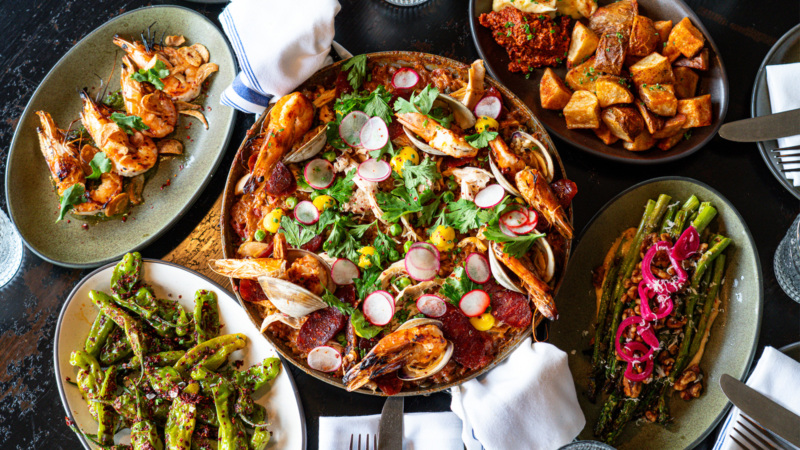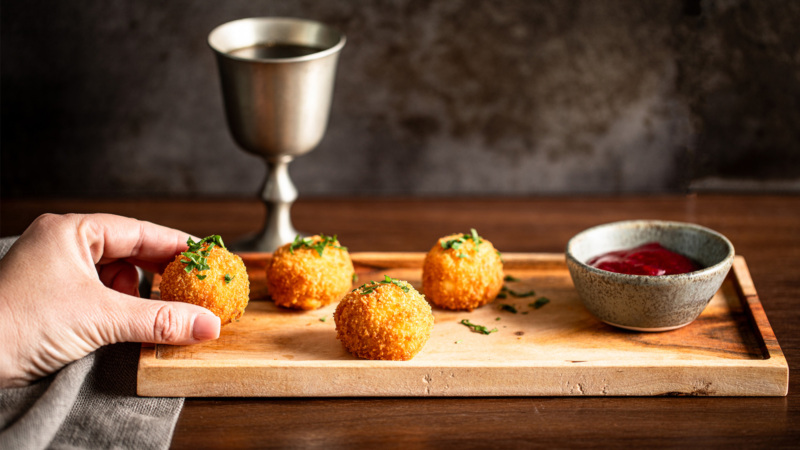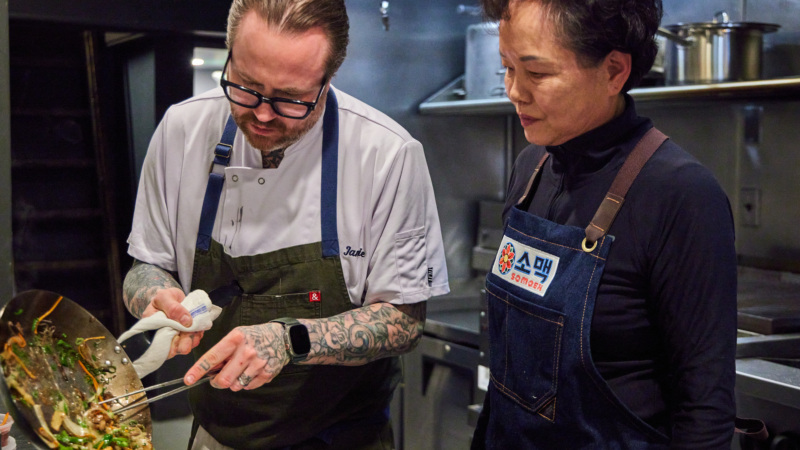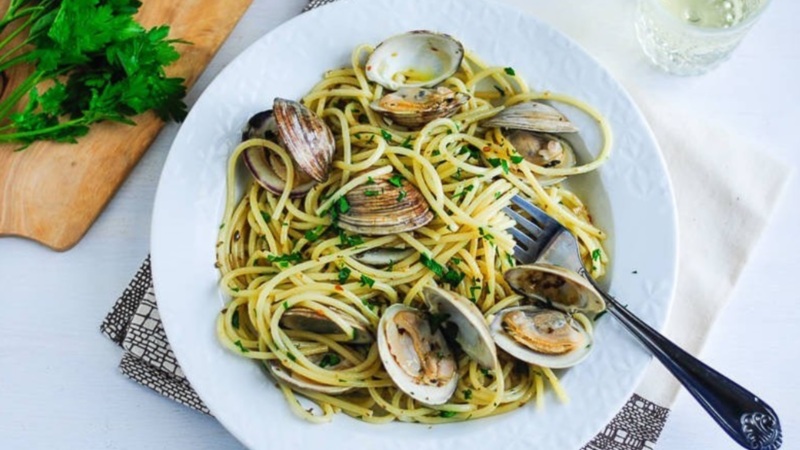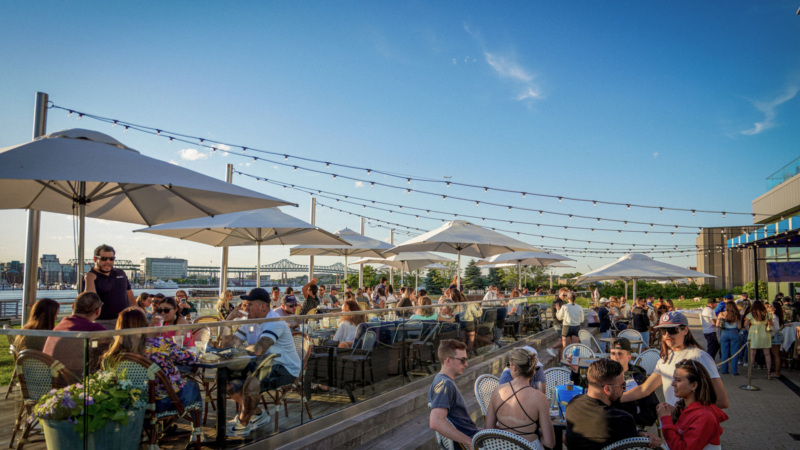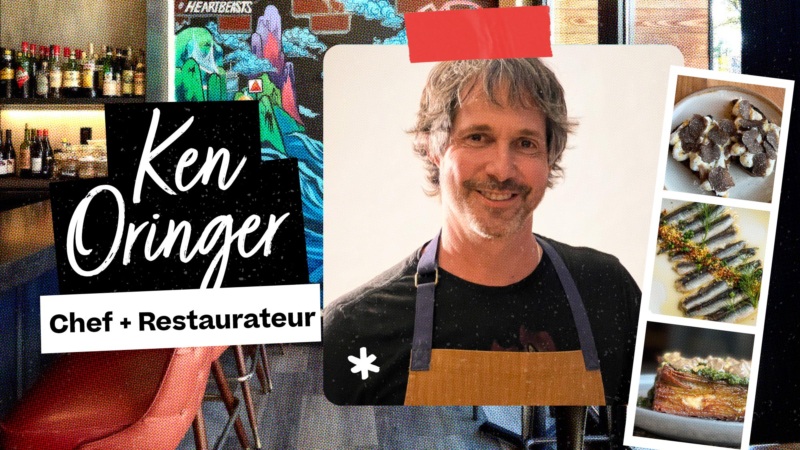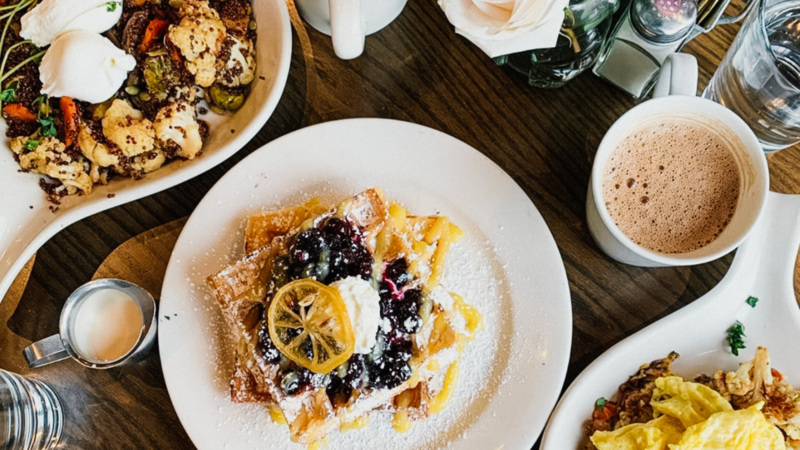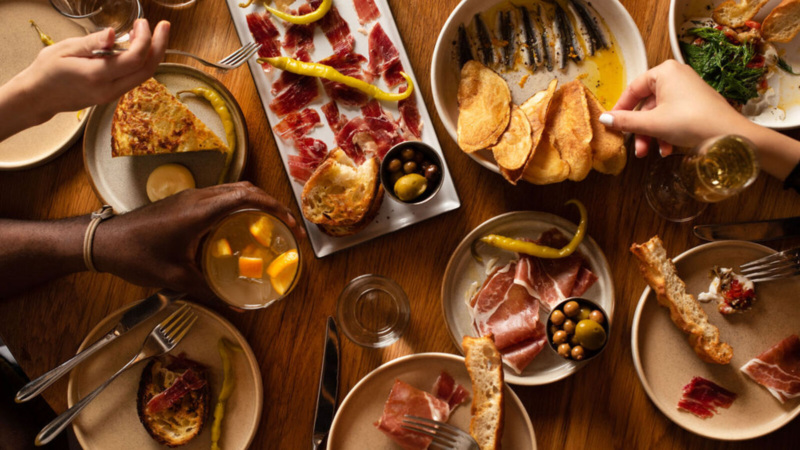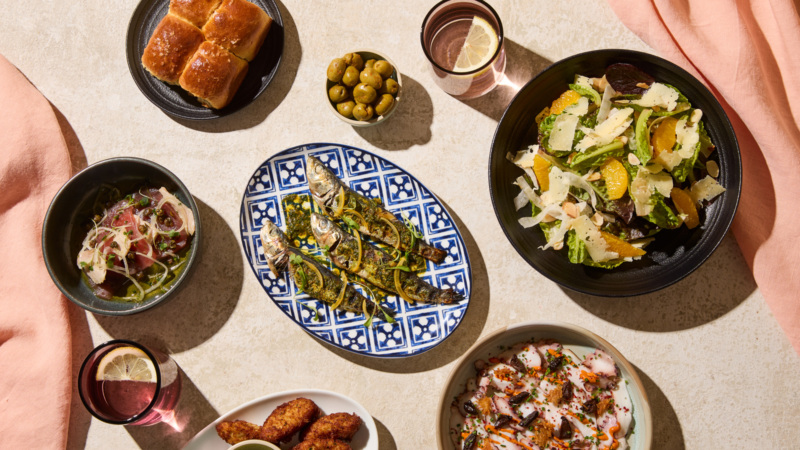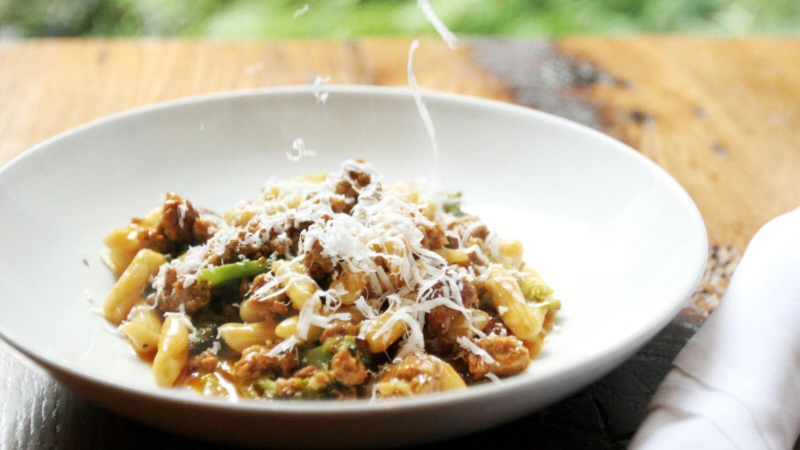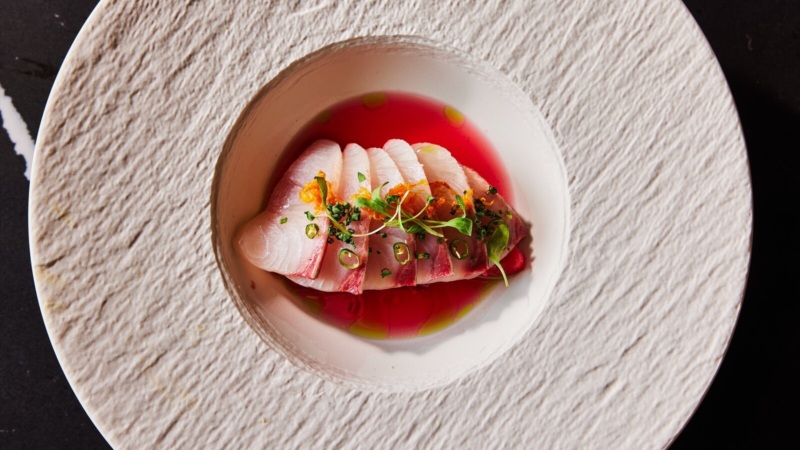
Six Things to Know About Baleia, Now Bringing Coastal Portuguese Cooking to the South End
The Coda Restaurant Group, responsible for The Salty Pig, SRV, and Gufo, has expanded its reach once more with the recent opening of Baleia in the South End. But unlike those aforementioned restaurants, which represent different interpretations of Italian cooking, Baleia’s focus falls squarely on Portugal.
Here’s what you need to know.


1. In particular, dishes come from Portugal’s southernmost region.
In the course of developing the menu, executive chef Andrew Hebert made multiple visits to Algarve, which holds Portugal’s southern coast and is famous for its fisherman’s villages and picturesque beaches. In turn, these environs inspired two of Baleia’s signature dishes: piri piri chicken and cataplana, a seafood stew named for the clamshell-shaped copper vessel in which it is cooked.
Both preparations are traditional. The cataplana’s pot opens to reveal a light, savory broth that holds braised pork, potatoes, clams, mussels, and shrimp. Meanwhile, the piri piri chicken is flavored by a sauce that blends tiger chiles, Fresno chiles and red bell peppers, and is plated with fries, and roasted garlic aioli.
“Piri piri chicken is very popular in the Algarve,” Hebert says, “There are restaurants where you just go in and all you can order is piri piri chicken and French fries and that’s how they serve it. So, I thought, we’re doing piri piri chicken and French fries — why not?”

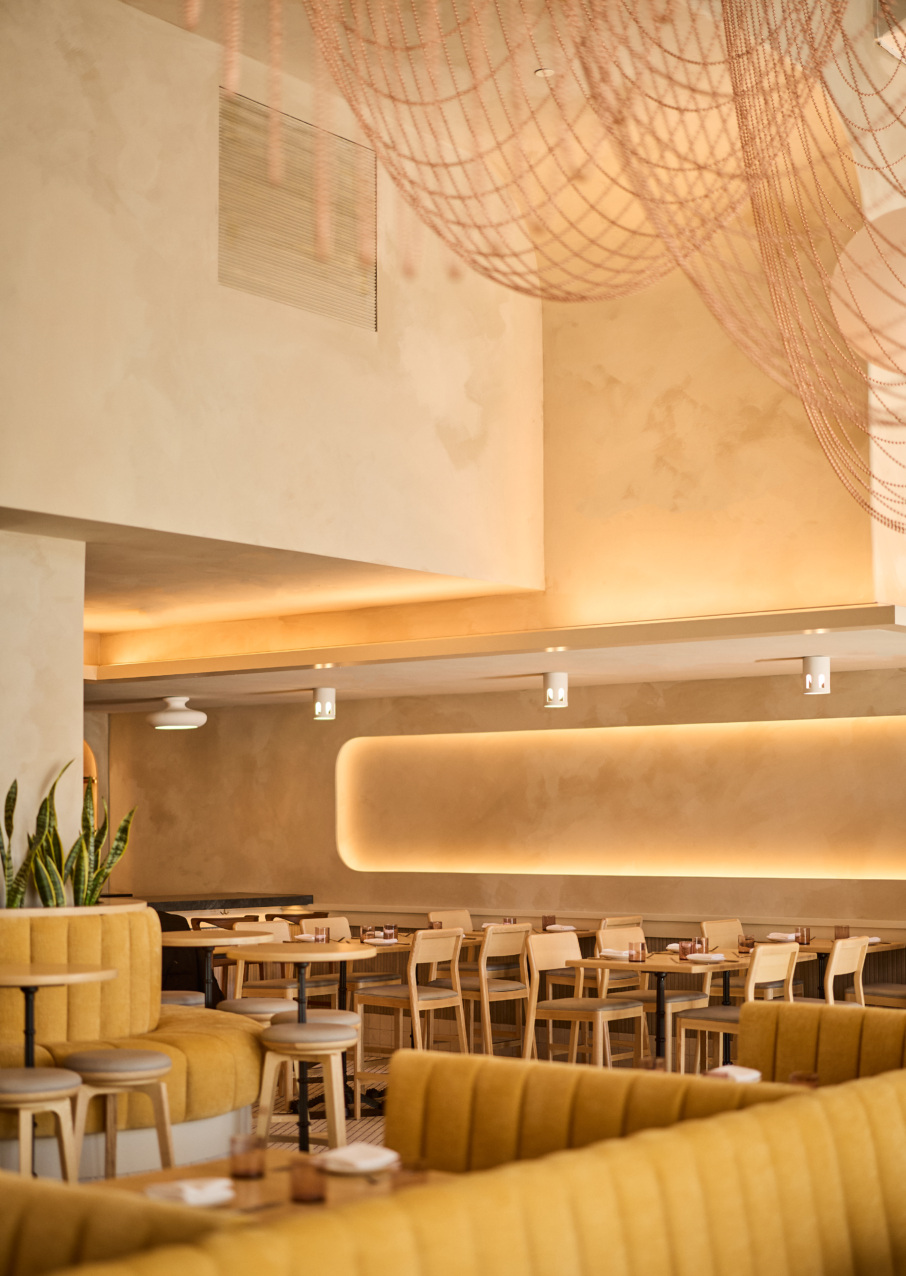
2. That coastal theme continues to the space itself.
Baleia took over the space that had briefly been Area Four and inherited its unorthodox mix of very high and low ceilings. To harmonize them, designer Jessica Haley of Rode Architects created a dining room with limewashed walls and softly rounded corners. In addition, the contrast between the high-ceilinged portion that hosts the majority of the restaurant’s tables and the low-ceilinged area populated by its high-tops and bar seating creates the feeling of distinct “outdoor” and “indoor” areas, as if you might be dining in the main plaza of some Portuguese fishing village. Adding to that nautical theme is the restaurant’s visual focal point, a blown-glass chandelier hung with metal beads that evoke the appearance of a fishing net.
3. There’s a theme to the wine list, and that theme is Portugal.
With a list totaling 70 wines — 14 of which may be ordered by the glass — Baleia has one of the most comprehensive selections of Portuguese wine in the city. And that number doesn’t even include the fortified selections, including Port and Madeira, served by the glass on the dessert menu.
“In the wine world and the food world, you hear a lot of ‘What grows together goes together,’ and we thought this was a good opportunity to feature an all-Portuguese wine list,” says Toni Maiorino, who serves as the Coda Group’s director of people and wine.
4. They’ve had to find creative uses for their draft lines.
Another hand-me-down from Area Four was the bar’s 16 draft lines — probably a few more than a restaurant not nominally focused on beer needs. To utilize them, Baleia split the lines down the middle, filling six on each side with beer while retaining the remaining slots for draft cocktails. The opening cocktail list sees two drams delivered by draft: the Condessa Branca made with gin, almond, bianco vermouth, fortified sake, and eucalyptus, and the Moda Antigua that mixes aged, rum, brandy, bitter aperitivo, and Licor Beirão, an herbal liqueur that is Portugal’s most widely consumed spirit.
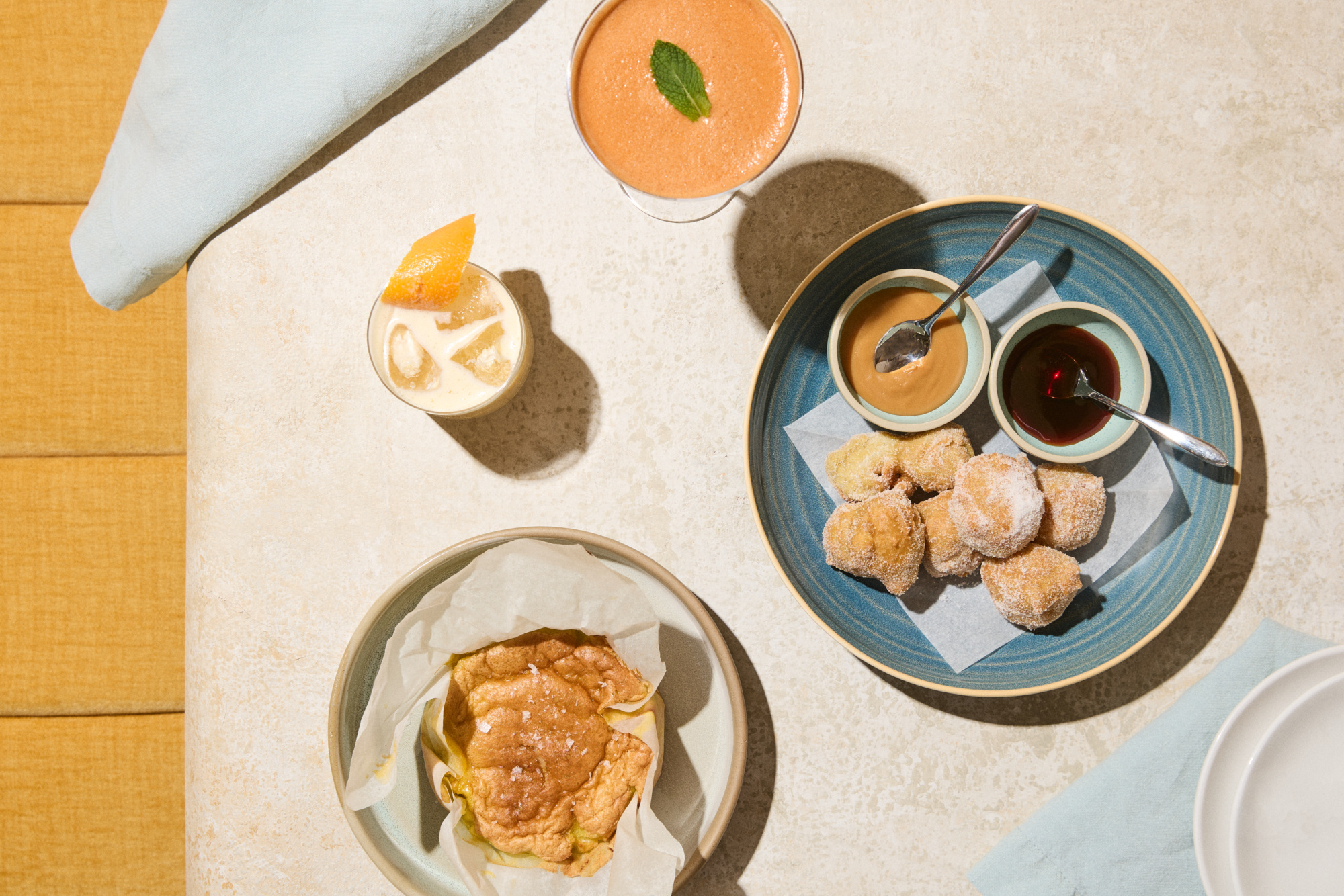

5. Go ahead — fill up on bread.
You’ll see them flying out of the open kitchen with startling regularity: small, dense buns with a distinctly golden tinge. These are Portuguese sweet rolls, which are made with pineapple juice, sugar, and butter, and served with a compound butter that contains chamomile syrup. As Hebert explains, they’re an edible testament to Portugal’s complex trading history, which helped introduce tea to England and sweet rolls to Hawaii.
And while a plate of rolls is the perfect way to round out a seafood- and meat-heavy menu that’s otherwise light on starch, Hebert has found another application for them. Riffing on a Portuguese pork sandwich typically made with crusty bread, Baleia’s bifana sliders are made by placing grilled pork, sharp yellow mustard, and piri piri sauce between a sweet roll. The result is a must-order starter that Hebert likens to SRV’s mandatory meatballs.
“You might have octopus carpaccio, you might have a really beautiful cod dish, but there is always a time and place for a really delicious, comforting dish as well,” Hebert says of its immediate popularity.
6. But leave some room for dessert.
Otherwise, you’ll miss out on traditional delights including pão de ló (an olive oil sponge cake) fried doughballs called sohnos, and the creamy egg tarts known as pastel de nata.
“The last time I was in Lisbon I had a couple for breakfast, a couple for lunch, and a couple for dinner,” says Hebert.
How’s that for a recommendation?










